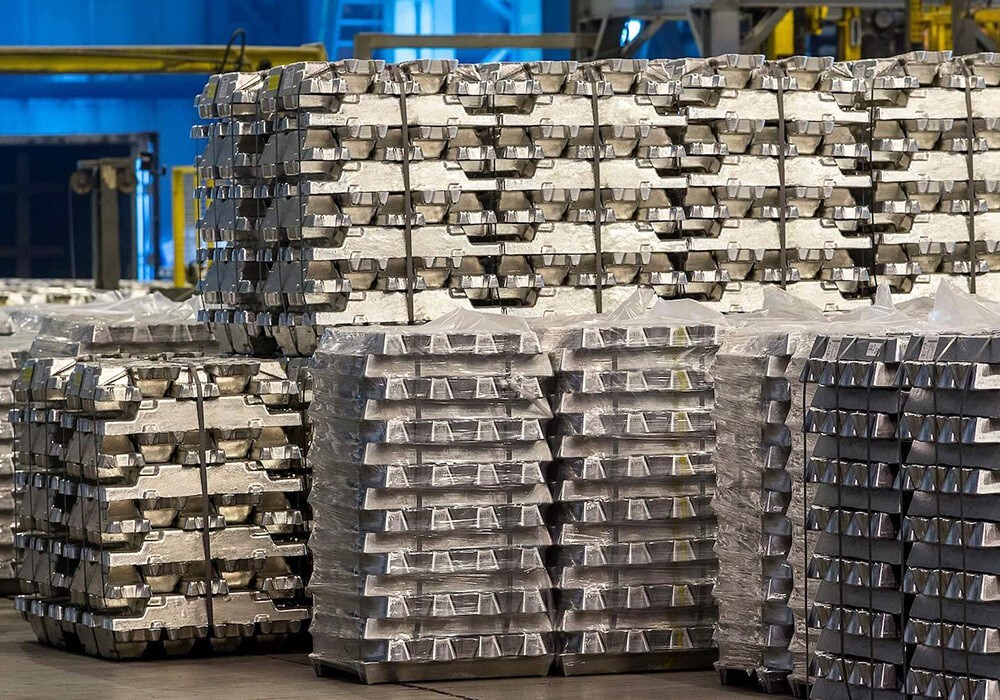

Once known purely for its unmatched production scale, China’s aluminium sector is undergoing a fundamental transformation, wherein growth is no longer measured solely in tonnes, but in energy efficiency, carbon accountability, and global influence. Despite mounting trade barriers and domestic production limits, the world’s largest aluminium ecosystem isn’t slowing down. Instead, it is recalibrating its priorities, positioning sustainability, automation, and innovation as the next growth drivers.

Image source: Iran Alumina Company
A shrinking export market, or is it a conscious withdrawal
“According to Aize Consulting’s monitoring data, the share of China’s aluminium and aluminium product exports to the US dropped from 12.17 per cent in 2020 to 9.70 per cent in 2024. With the escalation of Sino-US trade tensions this year, exports to the US have continued to shrink,” Aize Consulting noted.
Yet this decline has not shaken Beijing’s confidence. On the contrary, the government’s industrial strategy increasingly prioritises domestic consumption over outbound shipments, especially for raw or semi-finished aluminium products. According to the US Geological Survey, China exported just 155,000 tonnes of aluminium to the US in 2024, accounting for a mere 2.8 per cent of total US imports. By early 2025, that number had fallen further to 22,900 tonnes. In context, this represents a conscious shift, not a collapse.
In fact, as the Aize Consulting analyst pointed out, “Although traditional consumption has seen a decline, the emergence of new consumption areas will compensate for the shortfall in traditional demand.” That optimism is backed by hard data. In Q1 2025 alone, China’s downstream aluminium consumption stood at 9.7 million tonnes, with sectors such as EVs, renewable energy, and electronics taking the lead.
Sustainability as a market differentiator
Amid global decarbonisation pressures, China is aligning itself not just with scale but with standards. Aluminium producers that once catered to sheer volume are now evolving into providers of low-carbon, traceable, and compliance-ready metal.
“EU clients are more concerned about green and low-carbon, and they require us to submit CBAM data every quarter. STNM started providing CBAM data to EU customers from 2024 and has the capability of meeting the requirements on green and low carbon of the industry,” reported STNM, underscoring a larger shift in aluminium trade dynamics.
As the EU’s Carbon Border Adjustment Mechanism (CBAM) expands, Chinese producers are quickly integrating lifecycle emissions reporting into their value chains. This transformation is further incentivised by China’s plan to incorporate aluminium into its national carbon trading market by 2025, forcing companies to purchase carbon credits and thus monetise sustainability performance.
And this is not mere compliance theatre. According to Bloomberg’s Michelle Leung, “We have done a study before comparing the renewable energy consumption ratio of a few companies, including INALUM, CHALCO, Hongqiao and Hindalco, in which Indonesia’s INALUM was the highest at 98 per cent, while the others range from 16-48 per cent. While those numbers have been improving, they are still far below international players such as Alcoa, Norsk Hydro and Rio Tinto’s 67-87 per cent.”
This external benchmarking offers context for China’s internal drive to exceed 30 per cent clean energy usage in its aluminium sector by 2027, along with a 15-million-tonne recycled aluminium target, both set under its 2025–2027 sustainability action plan.
Technology meets safety in industrial upgrades
With energy costs rising and global expectations tightening, automation has emerged as a critical enabler of efficiency and precision. Domestic equipment makers are now engineering solutions that go beyond throughput and address environmental and human safety concerns head-on.
“Consistent with our commitment to workforce efficiency through automation, our equipment incorporates operator-centric automation designs. Crucially, we implement multi-tiered safety interventions – including automatic safety interlocks and emergency stop systems,” said Foshan Chuda Machinery Co., Ltd.
Technology is also transforming rolling processes where surface quality, water management, and material traceability are paramount. As EVERTZ Hydrotechnik observes, “In aluminium rolling processes, the surface quality, the environmental impact, and the complexity of loading systems under challenging spray media conditions are of crucial importance.”
Reimagining refining: The IB2 disruption
Few examples better illustrate the intersection of innovation and environmental ambition than IB2. In Shanxi, a game-changing refinery is nearing completion with far-reaching implications.
Romain Girbal, co-founder of IB2, said, “The first full-scale IB2 facility is being completed in Shanxi province through a partnership with Liulin Senze Coal Aluminium. Production is set to begin this summer with an initial capacity of 600,000 tonnes per year, scaling up to 3 million tonnes annually with the same client. The process also offers strong environmental advantages: 80 per cent less caustic soda, 67 per cent less red mud, and 40 per cent lower CO₂ emissions. IB2 also produces tobermorite, a component used in low-carbon cement, aligning with China’s circular economy goals.”
Growth without expansion
What makes this transformation more compelling is the deliberate choice to pursue sustainability within strict capacity constraints. China’s national ceiling for primary aluminium production remains capped at 45 million tonnes. In 2024, output reached 43.396 million tonnes, and by mid-2025, it was on track to touch 44.7 million tonnes.
While producers can theoretically raise amperage beyond design thresholds to eke out extra capacity, AZ Global notes that most smelters are already running at 98.2 per cent utilisation. In response, China is exporting its capacity instead (through mega-investments like East Hope Group’s USD 12 billion green aluminium complex in Kazakhstan) and leaning harder into recycling and global feedstock security.
Not just bigger, but better is the target
As per Alison Ju of SMM, “Looking ahead, as domestic demand from the new energy sector gradually slows, and emerging sectors like low-altitude economy contribute only modest aluminium demand, we expect the overall growth rate of China’s aluminium consumption to also moderate in the long run.”
On the other hand, “While the aluminium processing sector is currently navigating some cyclical headwinds, China’s aluminium industry maintains an unassailable competitive advantage globally, with aggregate market consumption continuing its upward trajectory – giving us strong reason for optimism moving forward,” asserts a senior executive from Luoyang Longding Aluminum Industries Co., Ltd.
That confidence is not unfounded. In 2024 alone, China added 277 GW of solar and 79 GW of wind power, pushing non-hydro renewables to 1,407 GW. By 2030, it’s projected to install over 3,200 GW of additional clean capacity — more than triple the growth seen from 2017 to 2023. Aluminium will be central to this expansion, especially as EVs, smart grids, and green buildings multiply in the years ahead.
In sum, China is beyond just producing aluminium anymore. It is reimagining the industry as a whole. From IB2’s red-mud reduction to STNM’s CBAM compliance, from carbon trading readiness to high-efficiency automation, China’s aluminium industry is showing the world what it means to industrialise without compromising the planet.
For detailed insights into China’s aluminium industry’s past, present and future, click here.
Responses








